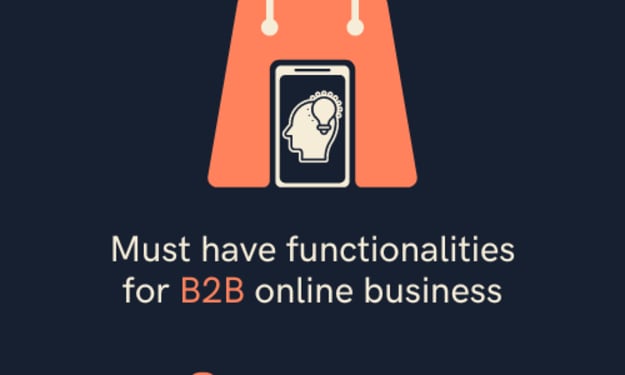
Web 3.0 is a term that describes the next generation of the World Wide Web, which promises to be more democratic, intelligent, and secure than the previous ones. But what exactly does Web 3.0 mean and how will it change the way we communicate, inform, and transact online? This blog post will look at the main concepts and technologies behind Web 3.0 and how they will affect digital marketing.
To understand what Web 3.0 is, we must first recall how the web has developed up until now. The first generation of the web, called Web 1.0, began in 1989 when Tim Berners-Lee invented the Hypertext Protocol (HTTP), Hypertext Markup Language (HTML), and the first browser for accessing documents and multimedia on the Internet. Web 1.0 was static and one-way - users could only read information, but not create or share it.
The next generation of the web, called Web 2.0, began around 2004 when new technologies such as AJAX, XML, RSS, Flash, and JavaScript enabled more dynamic and interactive sites. Web 2.0 was based on the concept of the "web as a platform" and focused on user-generated content - forums, social media, blogs, wikis, and other services. Web 2.0 gave a voice to the masses, but it came at a price - the centralization of data and content is in the hands of a small group of companies that control access to information.
This is where Web 3.0 comes in - the next evolution of the web, which aims to change the status quo through decentralization, blockchain technology, artificial intelligence (AI), and other innovations.
What are the technologies behind Web 3.0?
Web 3.0 is based on several key technologies that work together to create a more democratic, intelligent, and secure web. Let's look at some of them:
- Decentralization: This is the process of distributing control and power from centralized organizations to multiple network participants. Decentralization can be achieved through the use of peer-to-peer (P2P) architectures, cryptographic protocols, and consensus algorithms. Decentralization has the advantage of providing more freedom, transparency, and resilience to users.
- Blockchain: This is a type of decentralized database that records transactions in linked blocks of data that cannot be changed or deleted without the consensus of all participants in the network. Blockchain can be used to store and exchange digital assets, such as cryptocurrencies, non-fungible tokens (NFTs), digital identities, contracts, and more. Blockchain has the advantage of providing more security, reliability, and efficiency of transactions.
- Artificial Intelligence (AI): This is the field of computer science that deals with the development of systems that can perform tasks that normally require human intelligence. AI can include subfields such as machine learning (ML), computer vision, natural language (NLP), speech recognition, and others. AI has the advantage of improving the user experience through personalization, recommendations, analytics, and more.
These are just some of the technologies that contribute to Web 3.0. There are many more such as IPFS, Solid, Holochain, Metaverse, and more which we will cover in the next part.
What are Web 3.0 projects and examples?
Web 3.0 is still in the early stages of development, but there are already many projects and examples that show the potential of the new generation of the web. Let's mention some of them:
Polkadot: This is a decentralized project to connect different blockchain networks into one unified system. Polkadot aims to improve the speed, security, and interoperability of blockchain technology. Polkadot uses its cryptocurrency - DOT - to manage the network and create specialized subnets called para chains. Polkadot is the foundation for many projects in Metaverse, Web3, DeFi, and more.
- IPFS: It is a decentralized system for storing and sending files on the Internet. IPFS uses a P2P architecture and cryptographic hashes for data addressing and distribution. IPFS has the advantage of providing faster, more secure, and more resilient access to files without depending on centralized servers.
- Solid: This is a project to give control over personal data to users through the use of tax containers that store the information in decentralized locations. Solid was created by Tim Burns Lee - the inventor of the World Wide Web - and aims to change the way applications use personal data. Solid uses standards such as RDF, WebID, and OAuth to manage data access.
What does Web 3.0 mean for digital marketing?
Web 3.0 will have a major impact on digital marketing as it will change the way consumers and marketers connect and exchange information on the Internet. Some of the main changes and challenges are:
- More control over personal data: Web 3.0 gives users more freedom and control over their data through the use of cryptography, blockchain, and other technologies. This means that users will be able to choose how, when, and with whom to share their information, and also get paid for it. For marketers, this means that they will have to be more transparent, ethical, and value-oriented in the collection, processing, and use of user data.
- More personalization and interactivity: Web 3.0 will provide users with a richer and more interactive web experience through the use of AI, Semantic Web, Metaverse, and other technologies. This means that users will be able to receive more accurate, relevant, and adaptable information according to their needs, interests, and preferences. For marketers, this means they will have to be more creative, innovative, and emotionally engaging when creating content, ads, and products.
More democratization and collaboration: Web 3.0 will facilitate a more democratic, open, and distributed network through the use of P2P architectures, blockchain technologies, NFTs, and others. This means that users will be able to actively participate in the creation, sharing, and evaluation of content, and also earn from it. For marketers, this means they will need to be more open, flexible, and cooperative when working with consumers, partners, and competitors.
Web 3.0 is under development and there is no exact date for its release. But that doesn't mean we have to wait passively. As marketers, there are steps we can take to prepare for the new web era:
- Educate yourself: Learn more about the concepts and technologies behind Web 3.0. Follow the news, trends, and innovations in this field. Read books, articles, and blogs or watch videos on the subject. Join Web 3.0-related communities, forums, or social networks.
- Experiment: Try out some of the applications and services that use Web 3.0 technologies. For example, you can buy or sell some cryptocurrencies or NFTs, download an IPFS client, or visit some Metaverse platforms.
Adapt: Consider how Web 3.0 might affect your business model, target market, and competitive strategy. Assess the risks and opportunities that Web 3.0 presents for your industry and niche. Make the necessary changes in your product, pricing, distribution, and communication policy. Use Web 3.0 technologies to improve what you offer to your customers.
- Be innovative: Be creative and experiment in using Web 3.0 technologies to create new products, services or markets. Explore new ways to engage users through gaming, NFT, Metaverse and more. Work with other participants in the Web 3.0 ecosystem to develop new solutions.
About the Creator
Cekyrata
Only quality content: tips and trick in digital marketing






Comments
There are no comments for this story
Be the first to respond and start the conversation.